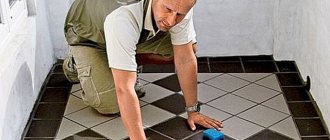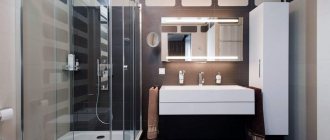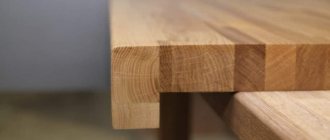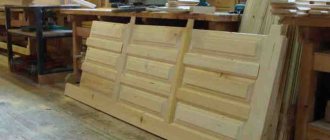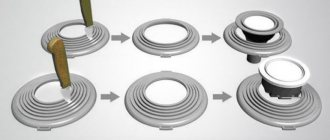Tile is considered a standard finishing material for places where there is high humidity. Most people give it greater preference when it comes to renovations in the bathroom, toilet or kitchen. The latter, by the way, can be finished with other necessarily moisture-resistant materials, but tiles, nevertheless, are always present. For example, in the form of an apron (screen on the wall) in the sink area
The work of a tiler is highly valued. Professional craftsmen know what types of adhesives are best to use for laying tiles, how to lay tiles on the walls so that they look beautiful and how to calculate the material in order to buy everything you need without spending too much.
Possession of the skills of such a profession is both useful and interesting. Many people have long appreciated this fact, and if it is necessary to carry out tiling work in their home, they are in no hurry to invite craftsmen, using their own strength.
Features of modern bathroom design
Different types of tiles on the floor and walls are characteristic of a modern interior design. Therefore, check out what criteria such a design must meet:
- A complete rejection of classical editing. Nowadays, structural materials with a matte and heterogeneous texture are in fashion.
- Laying standard single-color tiles in different patterns with a combination of facing materials of the opposite tone.
- The use of decorative items: friezes, borders, tiled plinths. A selection of drawings to match the color of the interior.
- Use for finishing finished collections in the bathroom: with ornament, decoration, unusual arrangement, intersecting seam.
- Using the horizontal masonry method to visually expand walls with diagonal floor placement.
- The use of vertical wide friezes is justified. This approach will help “raise” the ceiling and make the room lighter and more spacious.
Do not forget that for modern interior solutions it is important to highlight the internal corners of the room. Therefore, use tiles of a contrasting tone in relation to the base for their cladding. For example, for a room in a pastel color palette, a material is chosen to highlight the corners of red, green, and black. In these places, laying elongated decor is also encouraged. It will make the perimeter of the room perfectly smooth and hide design flaws.
Ornament in the bathroom with brown and patterned tiles Source design-vannoy.com
Important! The use of black tiles should be thoughtful and organic. It is best to combine it with a red ornament, a panel or a collection of drawings in the area of functional areas.
Vertical stripes in the bathroom of contrasting colors Source 3dlancer.net
Laying large format material
Are there any other “special cases”? Yes, in particular - laying large-format porcelain tiles. Plates up to 60 cm on one side can be considered “ordinary”, but in some lines there are even huge layers of 1 meter by 2 meters. And applying the same rules to them as to smaller ones is simply stupid.
First of all, you need special glue here. A huge slab simply won’t hold up on an ordinary one. In addition, the base should be even more ideal - not a single difference in height over the entire surface of the slab. You will also need to fix each individual sheet. Often, this is done using the same wooden plank. But some people forget about it and the coating begins to “creep”, so you literally have to hold it with your hands. Don't make such mistakes!
All other installation of large-format porcelain tiles follows the same pattern (depending on where it is located).
Popular layout options
The most difficult thing is to choose a pattern that can be used to decorate the walls and floor in the bathroom. If you create the ornament correctly, it is interesting to combine the seams between the tiles, you can get a unique effect. It will emphasize the sense of taste and add the finishing touches to the interior.
Correct placement of tiles in the bathroom from the corner horizontally Source m.my.mail.ru
Masonry from the corner
This method involves installing one tile in a row from the corner. From here they lay out the entire wall, using tiles without a pattern with the same surface. When you reach the next corner, there is usually empty space left. It is finished with cut fragments of tiles from the same collection. As a result, we may see a corner filled incorrectly. In appearance, it visually supports the ceiling and makes it higher. To ensure that such an element is clearly visible, a contrasting shade is used for grouting joints.
Placing tiles in the bathroom, starting from the center of the wall to the sides Source plitkahelp.com
Correct laying from the center
Installation begins from the center of the wall. When completing a row on both sides, the last tile is not fixed. Unfilled spaces on both sides are leveled and lined with material of the opposite color. The following combinations look good: light green and orange, brown and milky, peach and pink, white and black.
Installing tiles from the center using decor in height Source folksland.net
Laying squares from the center in the bathroom Source yandex.ua
See also: Catalog of companies that specialize in finishing materials.
Central masonry in different directions
For such a composition, background tiles and decorative elements are used. For the entire bathroom you will need at least 3 vertical rows of them. Laying begins from the center of the wall without architectural structures (built-in niches, bulges). Having reached the end of the row, they return to the center and carry out a similar installation of tiles in the opposite direction. At the end of each line a vertical decor is inserted. The same thing is done on the other edge of the row. This composition is repeated along the entire height of the wall. You can use not only friezes and borders, but also equally cut pieces of tiles of a different color.
Each method is guaranteed to be suitable for different conditions: with curvature of walls, lack of level.
Placement with ornament
Typically, this method is acceptable for tiling the floor in the bathroom. With the correct selection of geometric patterns, a tiled carpet is created. For such compositions, be sure to use edging around the perimeter of the room. It is chosen in dark, eye-catching tones. You can continue the framing with a plinth, also made from the remains of tiles.
Floral ornament on the wall in the bathroom Source roomester.ru
Using this technology, it is necessary to accurately calculate all dimensions. An error of a few millimeters can cost a shift and visual disruption of the diagonals in the room. Designers do not recommend using ornaments on the floor in small bathrooms. This is explained by the fact that the composition should be visible at the entrance. You can't clutter it with a headset.
Using patchwork tiles for masonry in the bathroom Source plitkahelp.com
Patchwork masonry
Patchwork is used for modern and vintage styles. It looks original in the bathroom. This interior will be remembered for a long time. It is equally used for finishing floors and walls. Screens under shower boxes or bathtubs are often decorated with this design. This option should be used sparingly. Otherwise, the composition will turn out to be a kaleidoscope that hurts your vision.
Bathroom with patchwork tile decor in the functional area Source plitkahelp.com
When covering the floor in a patchwork style, the walls should be left light and monochromatic. If you want to decorate the walls in a similar pattern, then choose only one, preferably the far one. The patchwork will always be visible on it. The remaining walls are made monochromatic (as in minimalist style). A multi-colored pattern can be placed in a small fragment behind the side of the toilet, under the washbasin, between wall shelves, opposite the mirror.
Patchwork tiles for decorating adjacent walls in the bathroom Source uutvdome.ru
For narrow and elongated bathrooms where a shower is installed, you can line two adjacent walls forming a corner with a patchwork pattern. Tiles are laid on the floor in diamond shapes or small squares. They try to use a light shade of the surface, and make the seams one tone darker.
Bathroom with shower with patchwork tiles Source remontbp.com
Bathroom with tiles on the walls in the form of parquet boards Source topplitka.ru
What is it and what types are there?
Porcelain tiles appeared not so long ago - only at the end of the 20th century, but even in such a short time they managed to gain many sincere fans. The fact is that the material is very wear-resistant and practical. He doesn’t care about temperature changes - from severe frosts to severe heat. It is inert to water, vapors, and also does not react to most chemicals. Calmly resists direct sunlight and open heat sources.
Another advantage is the variety of colors and formats. With their help you can decorate almost anywhere. If previously only the facades of buildings were awarded this, then gradually the coating is coming to residential premises.
There are 5 main types of porcelain tiles:
- matte (not covered with anything after production - a cheap option);
- polished (not coated, but thoroughly polished - expensive + requires careful maintenance - scratches and small chips may appear);
- glazed (coated with glaze, then fired - very similar to ordinary ceramic tiles, but stronger. Has a wide range in prices, as well as appearance);
- satin (coated with a special solution that makes it look like satin);
- structured (the only relief type, quite expensive, but very effective).
The only global problem: how to lay porcelain stoneware. This can really be difficult. The material is quite heavy, it does not “lay down” on any glue, it requires the most even surface, and if transport is unsuccessful, it can simply crack...
Too difficult? Actually yes. It is necessary to carefully study the procedure and not save either effort or time.
Schematic illustration of tile laying
For walls and floors, it is important to use different schemes when performing cladding. It is important to choose the right sized tiles. You can choose models of different colors and styles. The main thing is that the modules are successfully combined:
- Horizontal. The most common option. They try to use it for narrow bathrooms. One color of tile is located halfway up the wall from the floor. White-orange, white-pink, beige-brown compositions look great.
- Vertical. This option, on the contrary, is suitable for rooms with low ceilings. The same tiles are laid in several rows up to the ceiling, then replaced with a different color. This way you can alternate and make several stripes with similar masonry, or you can divide the bathroom in half.
- Contrasting zones. For this effect, you will need several tiles of a color that will stand out against the general background of the walls. Bright highlighting can be done near functional areas.
- Placing tiles with panels. Plain tiles in a bathroom without decoration are already outdated. Now they focus on panels with patterns and floral designs. Such drawings look very beautiful with a floral frame.
- Diagonal laying. It involves covering walls or floors with square tiles placed along diagonals. This effect has a beneficial effect on visualization. The atmosphere acquires notes of freshness and an original approach to execution.
- Brickwork. The use of this option is typical for the loft interior design. Light tiles are used. The seams are grouted with a product that matches the tile or is several shades darker. It is important here that the accent is visible.
- In a cage. This option is more suitable for finishing the floor. The work is very painstaking and requires care. You will need three types of tiles: long fragments, small squares and basic squares. Large tiles are laid out, narrow fragments on four sides, and small pixel squares in the corners.
- Chess board. This method is common in bathrooms of medium size. Such compositions make the room attractive, in-depth, and original. For this purpose, tiles of contrasting colors are used: blue and green, black and white, red and purple.
Complex and offset patterns can also be used. They will require several types of tiles. It is advisable to choose options from the same manufacturer. Each tile must match in thickness for easy laying.
Combination of several techniques
If you want to make your bathroom original, you can use several masonry techniques at the same time. For example, the base is an imitation of brickwork, and the interior panel in the shower is in the form of a parquet board. You can use elite tiles with a beautiful figured shape. It is used to line the following areas: near the sink, faucets, and shower head riser.
Beautiful bathroom design with tiles Source dizajninterer.ru
Preparatory work
Next you need to assess the condition of the walls. Ideally, they should be plastered and treated with a coarse primer. There should be no remnants of old glue or cement on them. If the surface is painted, then you need to make nicks on it for better adhesion.
If the condition of the walls is satisfactory, then you can proceed to marking.
We take into account the parameters of the room
In order for the selected layout to look good in the bathroom, you need to take into account several parameters. For example, for small rooms it is better to choose tiles measuring 15x15 cm or 20x20 cm. Also consider the list of important points:
- Use small and large tiles alternately or simultaneously for spacious rooms.
- In compact bathrooms, it is better to use a material with a glossy glazed surface.
- For large rooms, laying matte tiles on the floor and in work areas is relevant.
- Avoid a lot of dark colors, they can distract attention from interesting masonry options.
- Sharp tones and contrasting transitions can be used for bathrooms with showers and rooms with irregular geometry.
- A large number of decorative borders and friezes are optimal for wide bathrooms.
On a note! If you urgently need to visualize the height of the ceiling, use vertical masonry, long friezes, and highlight the corners.
Laying tiles on the floor with a matte texture and ornament Source satu.kz
Technology for laying porcelain tiles on the wall
Now let's move on to another use of the material, that is, let's talk about laying porcelain stoneware on the wall.
This will also require a special adhesive composition. It should be even more reliable than previous versions. The cladding itself begins not from the center, but from the bottom. Moreover, from the second layer. A separate bar marks the height with the seam of the first layer. Relying on it literally and figuratively, the second layer is laid. And then continue laying upwards. Only upon completion of the process is the bar removed and the first layer is placed.
